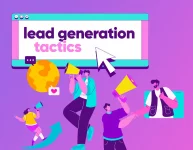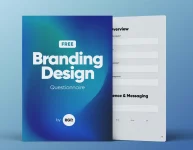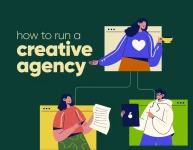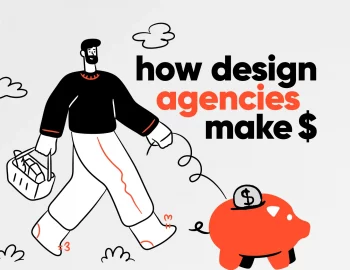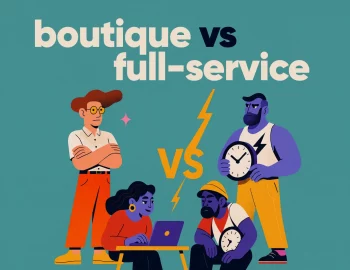You’ve got the portfolio, the talent, the passion, and the results to prove your agency is amazing. But when it’s time to package all of that into a pitch deck? That’s when things get tricky. And you sit and wonder how to make the best pitch deck for your creative agency – one that’s visually stunning, strategically sharp, and tailored to each potential client. How do you stand out when every other agency is saying, “We’re creative, we’re innovative, we get results”?
That’s where this guide comes in. And I’m talking about creating a pitch deck that doesn’t just look good – it works. One that tells a story, grabs attention, and makes potential clients think, “Yep, these are the people we need.” Interested? Cool. Let’s start with the basics: what exactly is a creative agency pitch deck, and why does it matter so much?
What is a creative agency pitch deck?
A creative agency pitch deck is a sleek presentation of your company, but it’s more than just slides – it’s your agency’s story, sales pitch, and first impression in one. It showcases who you are, what you do, and why you’re the perfect fit for a certain client’s needs.
A great pitch deck connects your expertise to a potential client’s goals, proving your value in a clear, compelling way. When done right, it’s also a scalable tool – easily tailored for different clients without starting from scratch every time. Oh, and if you’re wondering how long a pitch deck should be – it’s typically 10-15 slides long(enough to present your agency and still not lose the new clients’ interest).
Now, let’s break down what makes a pitch deck truly effective.
How to make a creative agency pitch deck?
Creating a well-crafted pitch deck that wins clients is more than squeezing all your best work into a slideshow – it’s about telling a compelling, client-focused story. Here’s how to do it right, step by step.
1. Know your client and their needs
Before you even touch a slide, take the time to understand the client. This means making the initial discovery call and researching their brand history, market position and trends, competitors, and current challenges. Ask yourself(or them) questions like: What keeps them up at night; what are their pain points? Which trends are influencing their industry?
The more you know about your client’s business, the more you can tailor your pitch deck to directly address their pain points. Use market research, client interviews, and even social media insights to build a clear picture of what they need. This deep understanding not only builds trust but also ensures that your presentation speaks directly to the client’s unique circumstances.
Remember it this way – personalization is key to a successful agency pitch deck. That’s why the more you understand your potential client’s needs, the more you can position your agency as the perfect solution (rather than just another option).
2. Craft a compelling introduction
First impressions are crucial. Your introduction should immediately grab attention and set the tone for the entire deck. Begin with a strong, engaging statement that positions you as not just another agency but as a strategic partner and most importantly – a solution. Your potential clients don’t care about your agency – yet. But they care about their problems. Open with a statement or insight that speaks directly to their challenges.
Example: “Brands that nail their digital presence see 3x more engagement. But getting there? That’s where most companies struggle. Let’s change that.”
Make sure this section feels personalized – demonstrate that you’ve done your homework and understand the client’s industry. A relatable story or a striking visual can also add that extra punch to make your introduction memorable.
Pro Tip: Start with a compelling statistic or a thought-provoking question to immediately grab attention.
Here’s an example:
3. Tailor your agency’s unique value proposition to address the client’s specific needs
A unique value proposition (UVP) is the heart of a winning pitch deck. It’s the clear statement that tells the client why you’re different and why you’re the best choice for addressing their specific pain points.
Start by identifying the key benefits your agency offers: Is it your innovative design approach? Your deep industry insights? Or perhaps your proven track record with similar clients? Articulate these points in a way that directly ties them to the client’s needs.
For instance, instead of merely stating, “We create award-winning designs,” explain, “Our award-winning designs are tailored to boost engagement and drive conversions, precisely what your brand needs to stand out in a competitive market.” You can also support your statements with relevant data or success metrics to give them credibility. Don’t rush this step – besides distinguishing you from competitors it also builds confidence in your strategic approach.
Pro Tip: Make It Personal. Customize your unique selling points for each pitch by mentioning something specific about the client’s industry or brand.
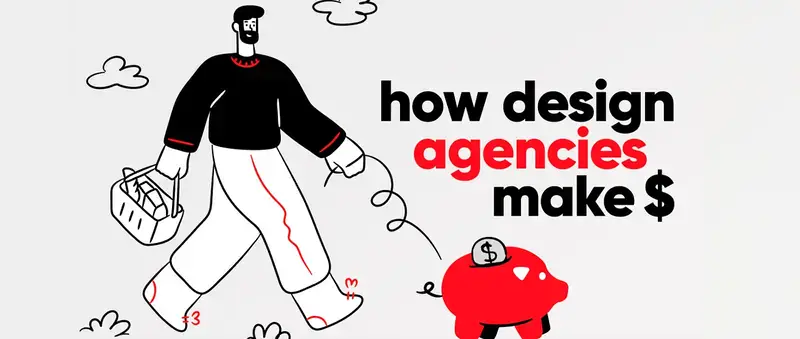
4. Introduce your team and expertise
Once you’ve captured your client’s attention, it’s time to showcase the power behind your agency. Include highlights of your agency’s story – how it all started; what motivates you to keep going; your mission and vision, etc. Introduce the key players who bring your vision to life and highlight their unique skills and experience.
You can provide brief bios that share a hint of personality as well – a friendly headshot or even a fun fact can humanize your agency and build trust. And certainly, underline your agency’s capabilities – emphasize how your combined expertise sets you apart and can tackle the client’s specific challenges.
5. Demonstrate data-driven strategies and solutions
Creativity without substance can fall flat, so it’s essential to back up your ideas with hard data. Lay out the research and insights that support your strategies, whether through market analytics, performance metrics, or case-specific data points. Detail how you’ve used these insights in previous campaigns to drive measurable outcomes – like increased engagement, higher conversion rates, or improved ROI.
Linking creative concepts to actionable results and showing that your innovative ideas are rooted in proven methods, you help the client understand that your approach is not only imaginative but also strategically sound and effective.
Also, clients love clarity and another idea is to add a slide explaining your process step-by-step so they know exactly what to expect. For example:
- Discovery & Strategy: Understanding their brand, audience, and goals.
- Creative Development: Concepting, designing, refining.
- Execution & Launch: Bringing everything to life.
- Optimization & Growth: Tracking results and making data-driven improvements.
Pro tip: A simple visual roadmap can make this section pop and while at it, consider including a timeline to show project milestones.
6. Showcase relevant case studies, social proof, and client testimonials
A picture is worth a thousand words, and nothing speaks louder than the success stories of previous clients. Share case studies that highlight your agency’s past achievements. Include real-world examples, visual before-and-after scenarios, and key performance results to illustrate your impact.
Complement these stories with past client testimonials and social proof that validate your claims. These elements serve as an honest reflection of your industry experience and help build trust. By showing potential clients that others have benefited from your approach, you not only establish credibility but also inspire confidence in your ability to deliver similar successes.
Social proof is powerful, remember that and use it to craft a truly compelling pitch deck.
Pro Tip: Video testimonials work even better, so consider embedding short clips from satisfied clients.
7. Include transparent pricing & packages
Clients want to know what they’re getting and for how much. Instead of a generic pricing slide, consider addressing this section for their certain needs, too, by presenting:
- Tiered Packages: Show different levels of service.
- Customizable Options: Give them tailored solutions with flexible pricing structures.
- Value Breakdown: Highlight ROI, not just cost.
No one expects you to give a firm price, but listing the expenses on solutions the potential client is interested in within a small price range will do the work. Optimizing costs for the client’s budget will show them that you’re not here only to take their money but to provide a service that will relieve their pain points, help them grow, and eventually build a long-term relationship.
Pro Tip: Framing Matters. Instead of leading with cost, lead with value – show them what they’re investing in.
8. Add a call to action for a glorious end
Wrap up your pitch deck with a final slide that guides your potential client to the next step. Develop a clear and compelling call to action that encourages prospects to take immediate steps – whether it’s scheduling a meeting, signing up for a consultation, or exploring a pilot project. Also, make the process as seamless as possible, which means including all contact details and options and making them clickable. Make it easy for your potential clients to say yes.
The strong call to action should feel like a natural extension of your narrative, encouraging new clients to envision a successful partnership with your agency. And make it clear, for example:
- “Ready to schedule a strategy session?”
- “We’d love to craft a custom plan for you – let’s chat next week.”
- “We’re ready when you are. Let’s elevate your brand together.”
Pro Tip: You can include a sense of urgency (limited availability, upcoming campaign slots, etc.).
Now that you know how to make an impactful creative agency pitch deck, let’s explore the best practices for presenting it in a way that truly captivates and convinces you.
Best practices for presenting your pitch deck
When it’s time to present your pitch deck, the delivery is as crucial as the content. So, here’s what to consider:
• Present in-person or online:
Choose the format that best suits your client’s preferences. In-person meetings allow for personal engagement and immediate feedback, while online presentations can be equally effective with the right setup and interactive tools. Make sure your technology is reliable to avoid any hiccups during an online session.
• Be open to questions and address concerns:
Encourage dialogue throughout your presentation. Invite your audience to ask questions, and be prepared to address any concerns or objections. This openness not only demonstrates your agency’s expertise but also builds trust by showing that you value client input and are confident in your solutions.
• Use storytelling techniques:
Transform your pitch from a series of slides into a captivating narrative. Use stories and relatable examples to illustrate your agency’s past successes, making your pitch more engaging and memorable. Storytelling creates an emotional connection, helping clients see the real impact of your work.
In addition to these essentials, rehearse your pitch deck presentation thoroughly, believe me, you don’t want to just read the slides – you want to tell the story. Tailor your messaging to your audience’s unique needs and try not to lecture but engage, ask questions, and involve the client. Use eye-catching visuals, maintain a steady pace, and keep your slides uncluttered to ensure your message is clear.
Effective design tips for crafting the best pitch decks
Creating a standout agency pitch deck goes beyond aesthetics – it’s about guiding your audience through a seamless narrative that reflects your creative brand and expertise. Here are some in-depth tips to help you craft a memorable and effective presentation:
- Select a captivating template:
Begin with a template that mirrors your brand’s identity. A clean, modern design lays a solid foundation, ensuring your content shines without being overshadowed by clutter.
- Prioritize readability and simplicity:
Choose clear, concise fonts and a harmonious color scheme. Consistent typography and balanced color contrast enhance readability, thus allowing your message to come through effortlessly.
- Incorporate interactive elements:
Engage your audience by adding clickable tabs, sliders, or even interactive infographics. These elements encourage clients to explore key data points and keep them actively involved during the presentation.
- Use videos and subtle animations:
Dynamic visuals can effectively break up text-heavy slides and illustrate your success stories, for example, or demonstrate your process, making your pitch deck both engaging and memorable.
- Maintain visual consistency:
Ensure a consistent layout, color palette, and style. A cohesive design looks professional and also helps guide your audience through your narrative.
- Use high-quality imagery:
Incorporate crisp, relevant images and graphics that resonate with your brand as high-quality visuals add credibility and prevent distractions.
- Establish a clear visual hierarchy:
Organize your content strategically. Use larger fonts, bold headings, or contrasting colors to highlight key messages, ensuring your audience’s attention is directed where it matters most.
- Test across multiple devices:
Preview your pitch deck on different screens to ensure the design remains effective and accessible in any setting.
Armed with these strategies and knowledge you’re one step ahead of the competition as you now know how to make creative agency pitch decks that capture attention and communicate your strengths with clarity and impact.
Bottom line?
A killer pitch deck isn’t just a sales presentation that looks good – it’s about telling a story, building trust, and making clients think, “This is the creative agency we need.” Nail the structure, back your ideas with proof, and design it to engage, not overwhelm. And when it’s time to present – own the room (or the Zoom)! Keep it clear, confident, and client-focused. Do that, and you won’t just pitch – you’ll win. Go get them!
Hey, if you wish to further level up your game in running a creative agency, we’ve got the articles for you:




